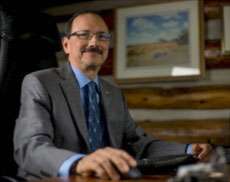Work-life balance. We hear the phrase constantly – in interviews, team meetings, LinkedIn posts, even self-help books. It’s become a shorthand for health, sanity, and productivity. But is it a helpful concept? Or are we clinging to a myth that needs to be replaced with something more honest?
This question came to life in a powerful way during recent discussions with my TEC Canada peer groups, sparked by a provocative statement from entrepreneur Emma Grede.
What Emma Grede Said
Emma Grede, founding partner of SKIMS and CEO of Good American, raised eyebrows during her recent appearance on The Diary of a CEO podcast, as reported by Good Morning America. When asked about work-life balance, she didn’t mince words:

“If somebody talks to me about work-life balance in an interview, I’m like, something is wrong with you.”
Her view is blunt: if you’re aiming for senior roles, especially at the top of an organization, chances are you’ll need to put in more time, and you should expect that.
Grede’s comments divided audiences. Some applauded her honesty about what it takes to succeed. Others found her tone dismissive, even tone-deaf, especially for working parents or caregivers. But regardless of where one stands, her remarks got people talking. And in my peer groups, the conversation quickly evolved into something much deeper.
The Real Question Isn’t Balance Between Work and Life. It’s Balance Within Life
The idea of work-life balance assumes a tug-of-war between two things: “work” and “life.” But when you step back, that framing just doesn’t hold. It sets up a false binary, as if work and life exist in opposition.
Every one of us has the same 24 hours in a day. Within those hours, we make thousands of micro-decisions about how we spend our time.
Sometimes we’re deliberate. Often we’re not.
But no matter what, the clock keeps ticking.
So what fills those hours?
- Sleep
- Work
- Personal care
- Relationships (spouse, children, family, friends)
- Community involvement
- Joy and rest
- Learning and personal growth
These aren’t separate from life. They are life. And every single one of them competes for space inside a very real, very finite container.
The “24-Hour Life Container”
Imagine your 24 hours as a red box. Inside that box are a number of smaller containers. Each represents a major area of life. These grow and shrink based on what’s happening in your life.
- A work emergency? That cloud gets bigger.
- A sick child or a long-overdue vacation? The family container expands.
- Training for a marathon? Suddenly, the personal care container swells.
But here’s the catch: when one container expands, others must shrink. We can’t simply add more hours.
So, we steal time – maybe from sleep, or relationships, or self-care. The problem isn’t that these shifts happen. The problem is when we stop noticing them, or worse, believe that we must sustain an oversized container indefinitely.
What CEOs Are Learning — and Leading
As leaders, CEOs must reflect on their own habits and leadership messages. What are we modelling for our teams? Are we unintentionally glorifying overwork? Are we punishing (even subtly) those who ask for balance?
We asked ourselves:
- When a candidate brings up work-life balance in an interview, how do we react?
- Is it a sign of lack of commitment — or a sign of self-awareness and maturity?
- Do we know what our own “container” proportions have looked like in the last week? Month? Year?
These questions didn’t lead to simple answers. But they led to more honest leadership.
Rethinking the Balance: A Life-Centered Lens
Emma Grede’s comments reveal something deeper: the very concept of “work-life balance” is flawed. It suggests a binary approach to life, as if work and life are opposing forces pulling us in different directions. But this framing doesn’t hold up.
The truth is simpler and more profound: it’s all life.
We each get 24 hours in a day; no more, no less, and that time is filled with a range of essential, fulfilling, and sometimes competing dimensions.
We often talk about work “taking over,” but when one area expands due to a deadline, a crisis, or a joyful event like a new baby or a long-awaited vacation, it must come at the expense of something else. The container is finite.
The question isn’t whether this happens (it will), but how we adapt and recalibrate over time.
A healthy life isn’t built on perfect daily balance. It’s built on ongoing awareness and intentional rebalancing.
Sometimes work requires more. Sometimes family does. Sometimes our health needs to come first. The key is to make those trade-offs consciously and recognize when we need to restore what’s been depleted.
At the end of the day, this isn’t about managing work and life. It’s about managing our life as a whole, with clarity, purpose, and personal accountability.
It’s not about balance between work and life. It’s about balance within life.
Want to Go Deeper with Conversations Like This?
If this reflection on life balance sparked something in you, imagine the value of regularly engaging with other CEOs who challenge your thinking and expand your perspective.
I chair executive peer groups with TEC Canada. These are confidential, high-trust spaces where leaders bring their real challenges and leave with sharper insights. From topics like this to the complexities of strategy, growth, and leadership, these groups are designed for CEOs who don’t want to go it alone.
Learn more about TEC Canada peer groups
You don’t have to lead in isolation. You just need the right peers at the table.






